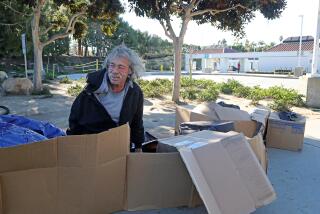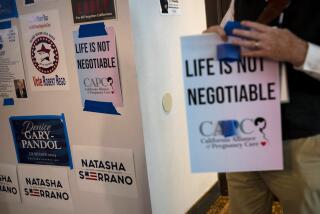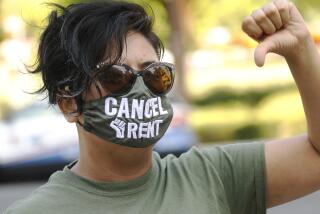New Move to Rid Harbor Blvd. of Prostitutes Assailed, Praised
In an unusual legal ploy that has civil libertarians crying foul, Santa Ana police Tuesday night began handing out complaint citations to prostitutes and their clients who congregate on Harbor Boulevard, warning them that they now face more serious penalties if they do not leave.
City officials earlier Tuesday had filed a lawsuit in Superior Court, asking that 350 convicted prostitutes and their “johns” be declared a public nuisance. If a judge approves an injunction, then any of the prostitutes notified by the police face more serious contempt charges if they return to the area.
“It has never been done before in California and maybe not anywhere else in the U.S.,” said Terrence Patrick Grace, Santa Ana’s deputy city attorney.
Residents along Harbor Boulevard between Sunflower Avenue and Westminster Avenue applauded the city’s move; civil libertarians immediately challenged it.
“It’s a violation of constitutional rights to try and get people off the street merely for their criminal record and not for any present illegal conduct,” said Rebecca Jurado, an attorney for the American Civil Liberties Union in Los Angeles.
She said people should not be arrested for their “mere presence” on a particular street.
A spokeswoman for COYOTE, a prostitutes’ rights organization based in San Francisco, called the Santa Ana plan “just another form of harassment” against prostitutes.
The plan discriminates against women because more female prostitutes are likely to be arrested than male “johns,” said Priscilla Alexander of the Call Off Your Old, Tired Ethics group.
Santa Ana City Atty. Edward J. Cooper disagreed. “We’re taking action to abate a public nuisance, and they’ll have an opportunity to contest it,” he said.
A hearing has been scheduled for Feb. 8, when a Superior Court judge will decide whether to issue a preliminary injunction against prostitutes and their customers, ordering them to remain 100 yards from the area.
If the injunction is issued, then cited prostitutes and “johns” who return--even if for reasons other than buying or selling sex--could be arrested for contempt and jailed. Grace said violation of the court order would be treated as a criminal matter, carrying more serious penalties than prostitution charges.
In addition, Grace said the city and police are asking the judge to assess monetary damages against those who would be arrested, including seizing cash that prostitutes often carry with them. Grace said some prostitutes are carrying $500 to $800 when arrested.
By 10 p.m. Tuesday, police had arrested about a dozen suspected prostitutes and brought them into the South Harbor police substation, where they were fingerprinted, photographed, and given citations with a warning that they could face more serious charges if they return after an injunction is issued.
One who was cited said she didn’t think the new program would have much of an effect. “There’s nothing you can do about it (prostitution along Harbor),” said a woman who gave her name only as Deborah. “It’s always been there, it’s always going to be there,” said Deborah, who stands about 6 feet, 2 inches tall and was dressed in a green sweatshirt-minidress. “ . . . I hope I’m out of here in 20 minutes, I gotta go to work.”
Santa Ana police said they were forced to come up with the approach because of a recent surge in prostitution in the area.
According to the California attorney general’s Bureau of Criminal Statistics, prostitution arrests in the county rose to 1,644 in 1987 from 1,524 in 1986.
Residents and business owners along Harbor Boulevard have complained that they find drug syringes and used condoms in the streets and are sometimes harassed by prostitutes.
“I’ve been propositioned a few times,” said Bob Osborne, 68, who lives about three blocks away from the targeted area.
“It’s the women and children I’m concerned about,” he said. “And it doesn’t help the property values either.”
While officials acknowledged that the effort may just move prostitutes to a new location, they said the problem has become particularly bad in the area.
Police in Garden Grove had discussed developing a similar plan in September.
More to Read
Sign up for Essential California
The most important California stories and recommendations in your inbox every morning.
You may occasionally receive promotional content from the Los Angeles Times.










